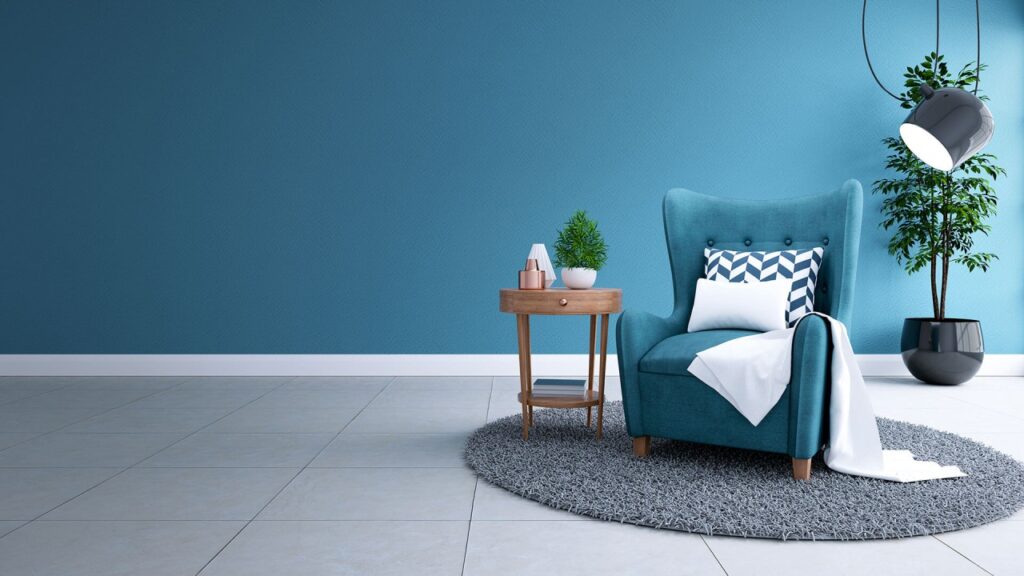
For many, the thought of interior design conjures images of beige walls, matching furniture sets, and a sterile, impersonal space. But interior design is far more than just aesthetics; it’s about crafting a haven that reflects your personality, fosters comfort, and ignites your creativity. It’s about moving beyond the beige and embracing a world of color, texture, and unique design elements.
This article is your guide to unlocking your inner decorator and transforming your living space into a work of art. We’ll explore design concepts, provide practical tips, and unveil creative ideas that will inspire you to create a home that speaks volumes about you.
Finding Your Design Voice
The first step is defining your design style. Are you drawn to the clean lines of modernism, the warmth of rustic charm, or the eclectic mix of bohemian flair? Browse through design magazines, scour Pinterest boards, and visit furniture stores to get a feel for what resonates with you. Consider your lifestyle and needs. Do you crave a minimalist space for relaxation or a vibrant, functional area for entertaining?
Color Psychology: A Palette for Your Mood
Colors have a profound impact on our moods and emotions. Understanding color psychology can be a powerful tool in your design arsenal. Warm colors like reds, oranges, and yellows evoke energy and vibrancy. Conversely, cool colors like blues, greens, and purples promote feelings of calmness and serenity. Don’t be afraid to experiment with bold hues as accent walls or statement pieces.
Playing with Texture: Adding Depth and Dimension
Texture adds visual interest and depth to a space. While smooth surfaces create a clean aesthetic, incorporating elements with contrasting textures like woven throws, plush rugs, or exposed brick walls can add character and dimension. Layering textures through furniture, fabrics, and accessories creates a visually stimulating and inviting environment.
Lighting: Setting the Stage for Your Design
Lighting plays a crucial role in setting the mood and functionality of a space. Utilize a combination of ambient, task, and accent lighting to create layers of illumination. Ambient lighting provides overall brightness, while task lighting focuses on specific areas like workspaces. Accent lighting highlights artwork, and architectural features, or creates a dramatic ambiance. Consider using dimmer switches to adjust the mood throughout the day.
Furniture: Finding the Perfect Fit
Furniture is the backbone of any interior design scheme. Invest in key pieces that are both stylish and functional. When selecting furniture, consider scale and proportion. Opt for pieces that are appropriate for the size of the room, allowing for comfortable movement. Don’t be afraid to mix and match styles to create a unique and personal aesthetic.
Beyond the Basics: Embracing Creative Touches
Once you’ve established the foundation of your design, it’s time to unleash your creativity! Here are some ideas to inspire you:
- Statement Walls: A bold accent wall with wallpaper, a vibrant paint color, or a textured material can add personality and visual interest to any room.
- Artful Touches: Display artwork, sculptures, or photographs that reflect your taste and create conversation starters.
- Vintage Finds: Incorporate vintage furniture, lighting, or decorative objects to add a touch of history and character to your space.
- Unexpected Accents: Don’t be afraid to include unexpected elements like a hanging planter, a unique rug, or a collection of travel souvenirs.
- Nature’s Touch: Bring the outdoors in with potted plants, botanical prints, or natural materials like wood and stone.

Pro Tips for Aspiring Interior Designers
- Planning is Key: Before making any major purchases, create a mood board or floor plan to visualize your design ideas. This will help you ensure everything works cohesively.
- Embrace DIY Projects: Upcycle old furniture, create your artwork, or add personal touches through DIY projects to inject your personality into the space.
- Think Outside the Box: Don’t be afraid to experiment and take risks. Interior design is an ongoing process, so have fun and embrace the journey!
- Accessorize Wisely: Accessories can elevate your design or create clutter. Opt for meaningful pieces that complement your theme and avoid overdoing it.
- Edit with a Critical Eye: Regularly assess your space and remove any pieces that feel out of place or no longer spark joy.
Related: Five Popular Free Interior Design Software
Conclusion: A Reflection on You
Interior design is a powerful tool for self-expression. By embracing your creativity, understanding design principles, and incorporating these tips, you can transform your living space into a sanctuary that reflects your unique personality and fuels your well-being. Remember, there are no hard and fast rules. The most important aspect is to create a space that feels comfortable, inspiring, and truly yours. So, ditch the beige, unleash your inner decorator, and design a home that tells your story!
Embrace Sustainability
While creating a beautiful space, consider incorporating sustainable practices. Look for furniture made from recycled materials, invest in energy-efficient lighting, and opt for natural fibers like cotton and linen for textiles. You can also add vintage finds or upcycled pieces to give your space a unique character while minimizing environmental impact.
Technology for Enhanced Living
Technology can seamlessly integrate with your design to create a smarter and more comfortable home. Consider incorporating smart lighting systems that can be controlled with your voice or phone, or invest in automated blinds for effortless light control. Smart thermostats can optimize energy usage, while strategically placed speakers can create an immersive listening experience.
Designing for Specific Needs
If you have children or pets, consider their needs when designing your space. Opt for durable, easy-to-clean furniture and incorporate elements that promote play and interaction. Utilize storage solutions to keep clutter at bay and create designated play areas.
Remember, It’s a Journey
Your home is a living and evolving space. Don’t be afraid to experiment, tweak your design as your style evolves, and update your décor with seasonal touches. Embrace the journey of creating a space that reflects your ever-changing personality and needs.
Beyond This Article
This article provides a springboard for your interior design adventure. There’s a wealth of resources available online and in libraries. Explore design blogs, watch home improvement shows, and take inspiration from real-life spaces. Consider attending workshops or consulting with an interior designer if you need additional guidance.
Most importantly, have fun! Interior design should be a joyful process of self-discovery and creation. So, unleash your inner decorator, embrace your creativity, and design a home that reflects the unique and wonderful you.







